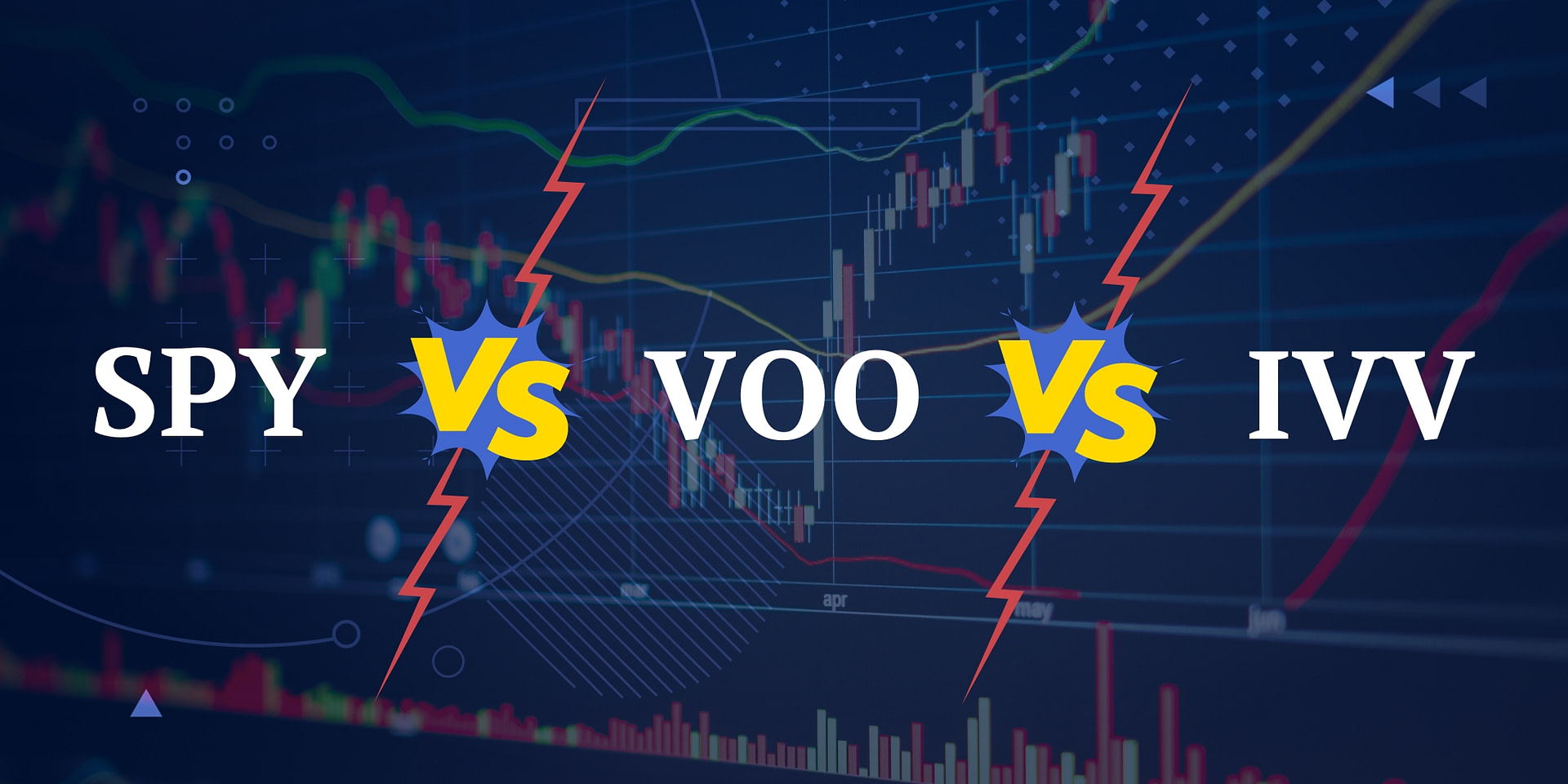SPY vs. VOO vs. IVV: a faceoff between three large, popular index funds, all tracking the S&P 500. But what’s the difference if they all track the same index? And how can you decide which is best for you?
Let’s start with the basics.
SPY vs VOO vs IVV: By the Numbers
| SPY | VOO | IVV | |
|---|---|---|---|
| Full Name | SPDR S&P 500 ETF Trust | Vanguard S&P 500 ETF | iShares Core S&P 500 ETF |
| Index Tracked | S&P 500 Index | S&P 500 Index | S&P 500 Index |
| Assets Under Management* | $403.3 billion | $339.7 billion | $352.1 billion |
| Average Daily Volume (shares) | 10,989,786 (30-day average) | 4,089,646 (50 day average) | 4,627,769 (30-day average) |
| Number of Holdings | 503 | 507 | 507 |
| Expense Ratio | 0.0945% | 0.03% | 0.03% |
| Dividend Yield* | 1.61% | 1.56% | 1.58% |
| Issuer | State Street Global Advisors SPDR | Vanguard | iShares / Blackrock |
* As of October. 2023
Five-Year Performance
SPY vs VOO vs IVV: Overview
All three follow the same S&P 500 index, which is composed of 500 of the largest publicly traded companies in the US. That means the three funds will be holding essentially the same stocks in the same proportions. The only differences are in the details.
The S&P 500 index and the ETFs that track them are market cap weighted. That means that they give larger companies a heavier weight.
- SPY is the largest S&P 500 index, slightly ahead of the others in total assets under management and daily trading volume compared to the other two combined. It also has the largest expense ratio, 3x higher than VOO and IVV.
- VOO is by a small margin the S&P 500 ETF with the smallest amount of assets under management and the smallest trading volume.
- IVV Is very similar to VOO but slightly larger in assets and trading volume.
All three ETFs have an almost identical exposure as they follow the same index. The only difference is that VOO and IVV contain a few more stocks, as they are authorized to only partially follow the S&P 500 composition while trying to replicate the index, hence the slightly higher number of stocks held.

SPY vs VOO vs IVV: The Differences
Because they are so similar, it is easy to get confused about which S&P 500 ETF to choose.
The first choice to make is between SPY and VOO/IVV. This is because SPY has a much higher expense ratio, more than 3 times higher. So why is SPY the largest of the three if it costs more to own it?
This is because the expense ratio only tells part of the story about an ETF’s costs. The expense ratio defines the costs you will pay when you own the ETF. However, the spread (the difference between buying and selling price) also affects the actual cost of owning shares in an ETF.
SPY has the most liquidity and the lowest spread, making it the favorite S&P 500 ETF for the largest financial institutions.
If you want to buy and hold, you want the lowest expense ratio possible and will prefer VOO or IVV. But if you intend to trade in and out of this position often enough, you’ll ultimately pay lower fees with SPY.
The choice between VOO and IVV is more difficult. Both have the same expense ratio, and the dividend yield only differs by a microscopic 0.02%.
One factor could be a preference for one issuer over the other. Both Vanguard and Blackrock are large and well-respected institutions.
While almost at the same price in 2020, VOO has somewhat lagged behind IVV since, trading at a lower price. This is due to small differences in how the ETF is managed and when it was created.
However, taking a long-term view (20+ years), it seems this difference is not getting greater over time. So it is not very likely to affect the performance of your portfolio in actual practice.
Which Is Best for You?
The first thing to decide is why you are interested in buying an S&P 500 ETF.


There’s very little difference between IVV and VOO. But if you worry about the slight but persistent discount of VOO compared to the other 2 large S&P 500 indexes, you might prefer IVV. A preference for Vanguard vs Blackrock could also decide for one against the other.
No matter which you choose, any of these ETFs will give you diversified exposure to the top 500 publicly listed companies in the US. If you intend to hold for many years, lower fees might make a real difference, especially if you hold the ETF in a retirement account.
If you want to diversify your S&P 500 ETF with other ETFs, you’ll have plenty of options. We’ve already looked at SPY vs QQQ, an SPX fund vs top NASDAQ 100 fund, and VTI vs VOO, a major SPX fund against a fund tracking the CRSP U.S. Total Market Index. Any of these funds will provide broad, inexpensive exposure to the US markets.



